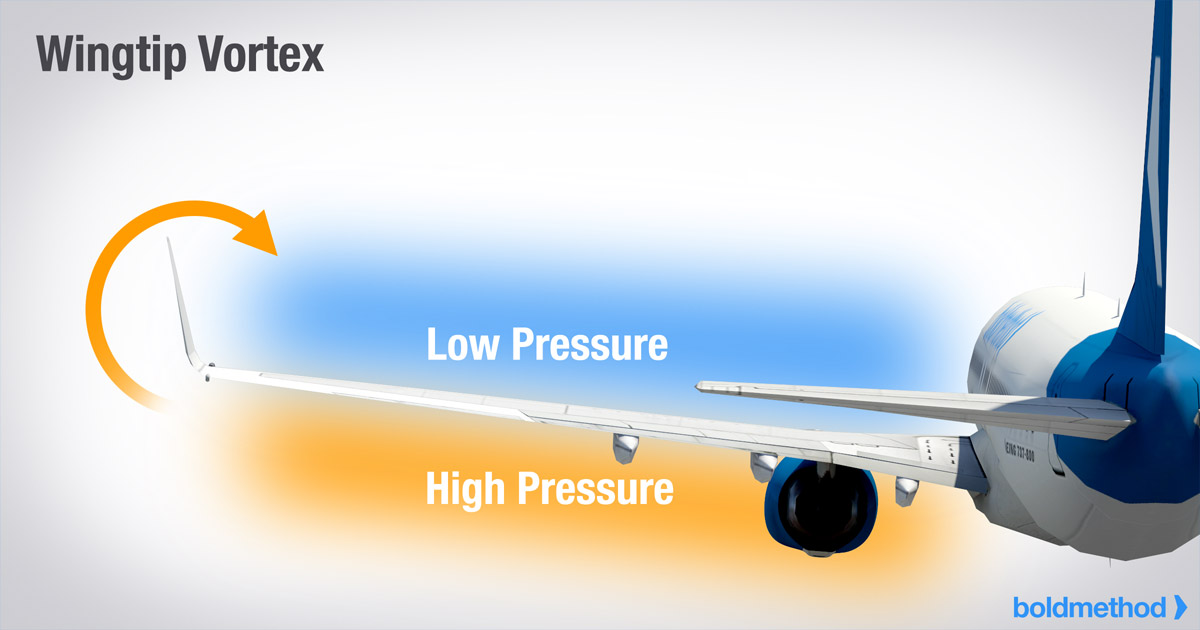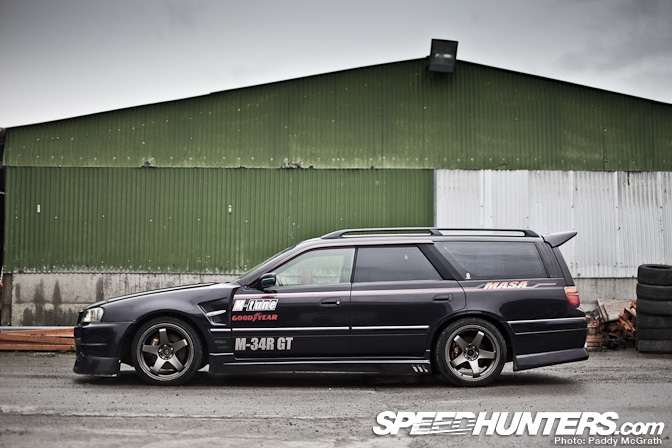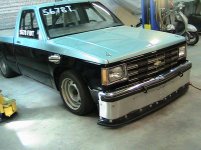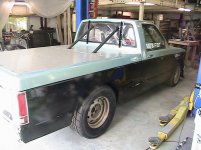Almost 2 years ago I drove 188.75mph/302km/h standing mile in quite good conditions with my -90 245 "T6". Because that was surprisingly easy, I have since thought of getting closer to 200mph.
The pass was done with 1.8bar boost around max 700hp. And with that tuning it had a decently large torque curve, peaking 840Nm. Adding 50-100hp and same amount of torque isn't a problem and according to my calculations current gearing allows ~203mph @7600rpm.
I've lowered the car and is in the picture below as low as I'm willing to go. Now it still has some room for suspension travel. I adjust the ride height a little higher for street or track use. I made a front lip under the stock spoiler and taped the gaps(I stripped some of the tape before taking the picture). Just adding the lip made a huge difference on the road on a very windy day by reducing the amount of air getting under the car.

Somewhere around 270-280km/h the front started to feel a little light but it could be just a feel due to the speed. Anyway now I'm looking for more aero mods which would be good for reducing drag and possibly improving stability. Even minor ones. Removing wipers and removing or folding/removing mirrors are on the list. Window list was removed when I replaced the window. Wheels with flat surface are an option, Polaris just looks too good But where to go/what to do after that?
But where to go/what to do after that?
For starters I've thought of making a lip that goes a bit lower and doing a flat paneling to the bottom. I did already start at the front:

I've seen some cars with a rear wing which extends the roofline downwards. Sort of like a rear window does on a hatchback. Could this be used? Of course it would have to be easily removable. Adding a diffusor doesn't seem as good option for reducing drag as does preventing air from getting under the car but does it? Flat bottom and a even a mild diffusor could/will remove air better from engine bay and improve cooling?
Testing possibilities are naturally limited to one day events here and there. Don't want to make completely uncertain changes that could have negative effect on handling. Would also like to have results instead of just testing And this isn't even a racecar so the more it looks stock on the road, the better.
And this isn't even a racecar so the more it looks stock on the road, the better.
The pass was done with 1.8bar boost around max 700hp. And with that tuning it had a decently large torque curve, peaking 840Nm. Adding 50-100hp and same amount of torque isn't a problem and according to my calculations current gearing allows ~203mph @7600rpm.
I've lowered the car and is in the picture below as low as I'm willing to go. Now it still has some room for suspension travel. I adjust the ride height a little higher for street or track use. I made a front lip under the stock spoiler and taped the gaps(I stripped some of the tape before taking the picture). Just adding the lip made a huge difference on the road on a very windy day by reducing the amount of air getting under the car.

Somewhere around 270-280km/h the front started to feel a little light but it could be just a feel due to the speed. Anyway now I'm looking for more aero mods which would be good for reducing drag and possibly improving stability. Even minor ones. Removing wipers and removing or folding/removing mirrors are on the list. Window list was removed when I replaced the window. Wheels with flat surface are an option, Polaris just looks too good
 But where to go/what to do after that?
But where to go/what to do after that?For starters I've thought of making a lip that goes a bit lower and doing a flat paneling to the bottom. I did already start at the front:

I've seen some cars with a rear wing which extends the roofline downwards. Sort of like a rear window does on a hatchback. Could this be used? Of course it would have to be easily removable. Adding a diffusor doesn't seem as good option for reducing drag as does preventing air from getting under the car but does it? Flat bottom and a even a mild diffusor could/will remove air better from engine bay and improve cooling?
Testing possibilities are naturally limited to one day events here and there. Don't want to make completely uncertain changes that could have negative effect on handling. Would also like to have results instead of just testing
Last edited:






 And it doesn't have to be. Just trying make it even slightly better.
And it doesn't have to be. Just trying make it even slightly better.


